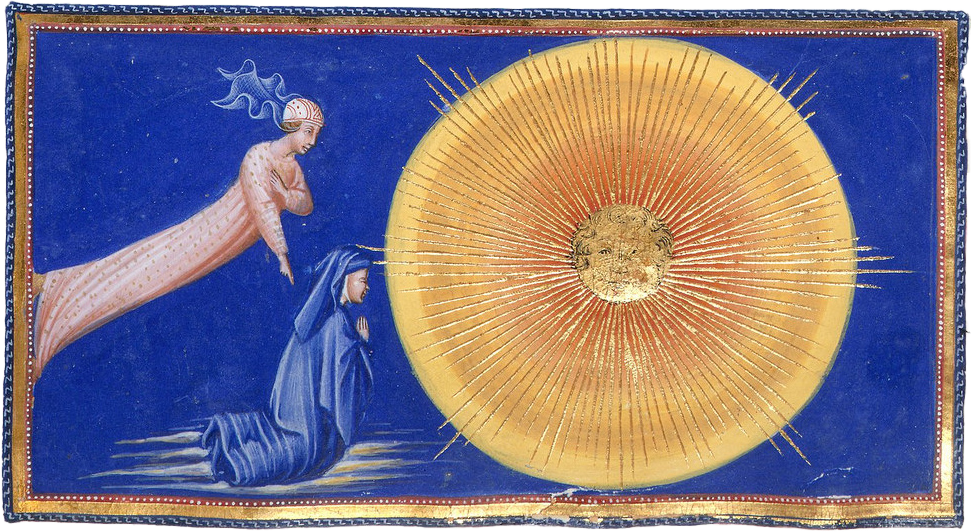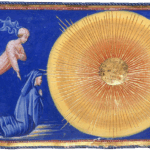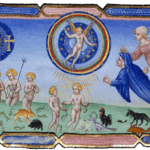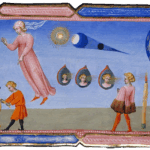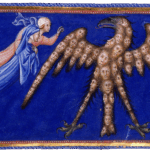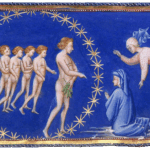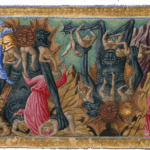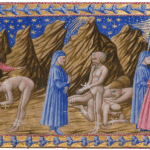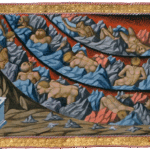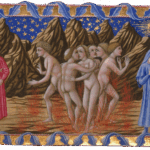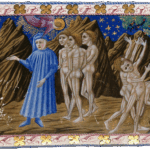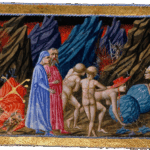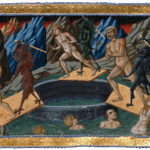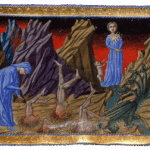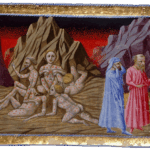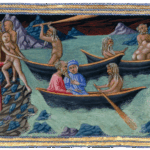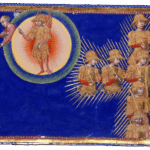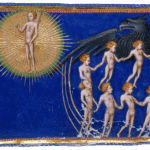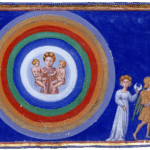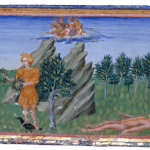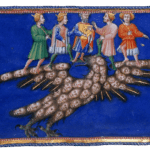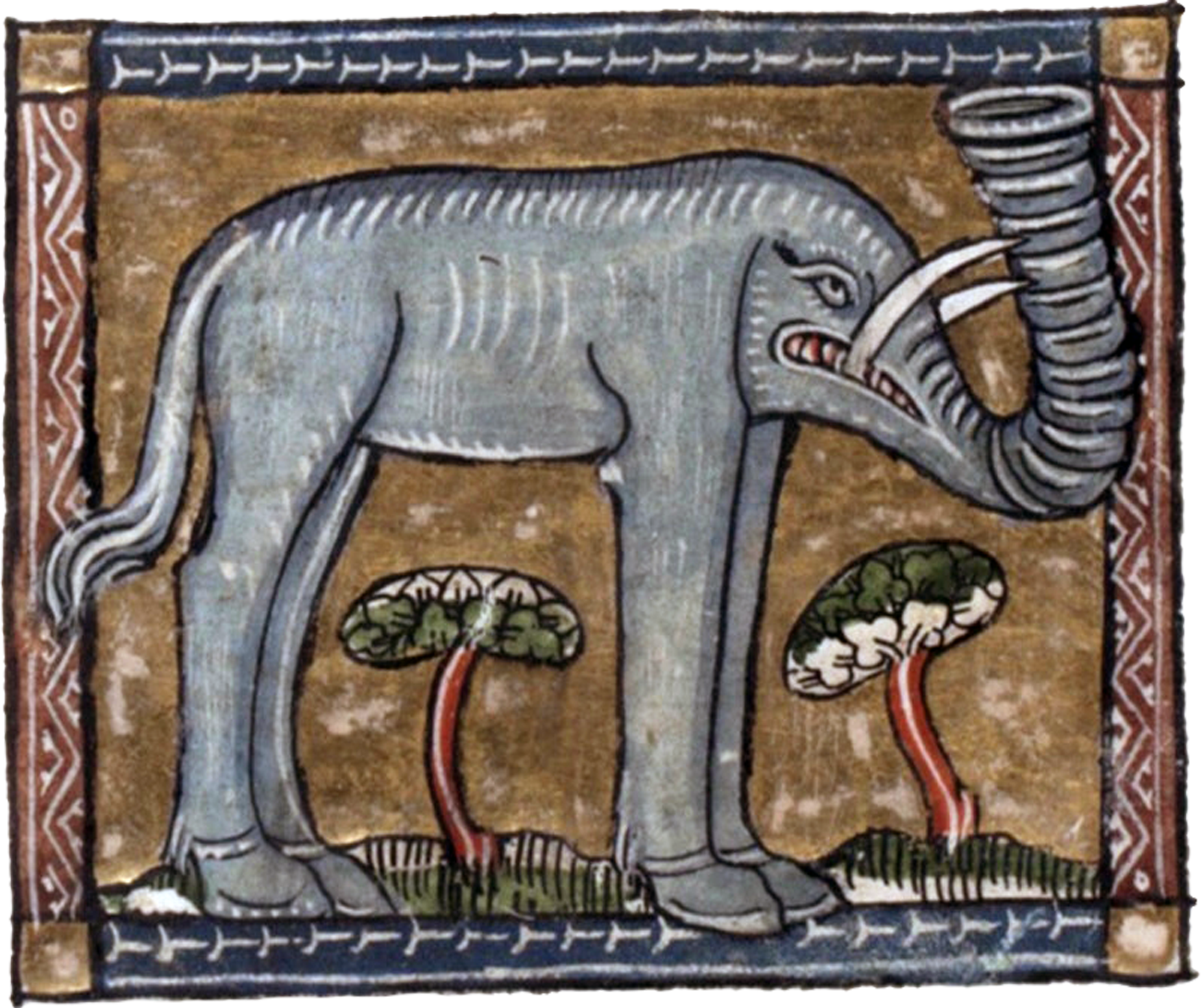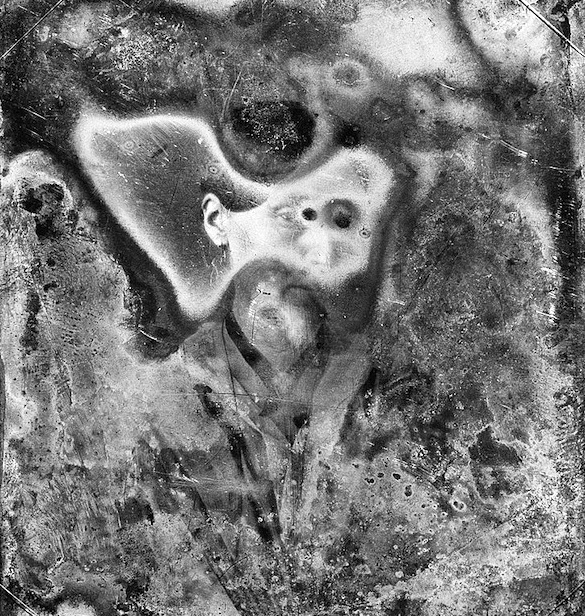These illustrations from a 15th-century book show various areas of hell, purgatory, and heaven, based on Dante’s musings in The Divine Comedy. Hell and purgatory were painted by Priamo della Quercia, and Giovanni di Paoli di Grazia did heaven.
The Divine Comedy
Dante’s journey through the World of the Dead was entertaining, if you like that kind of thing, but not that funny – so why is it called a comedy? Because the poem ends with Dante experiencing a vision of God — that’s the mix of happy ending and Godly influence that qualified as a comedy in those days. In fact, Dante originally called it just Comedy, but a later editor changed it to “Divine Comedy”, so people didn’t get the wrong idea.
These gorgeous and inventive illuminations of the Divine Comedy were produced between 1444 and 1450 — more than a century after Dante wrote it. The work was split between two artists: Priamo della Quercia took Hell and Purgatory, while the more well-known Giovanni di Paoli di Grazia illustrated Heaven.
The book originally belonged to Alfonso V, king of Aragon, Naples, and Sicily. His great-grandson, Ferdinand, Duke of Calabria, donated it to a convent in Valencia in 1538. In 1901, it was bought by Henry Yates Thompson, who donated it to the British Museum in 1941.
Dante’s companion through hell and purgatory is the Roman poet Virgil. But Virgil is a pagan, so cannot enter paradise. Thereafter, Dante is accompanied by Beatrice, based on a girl he met when she was nine years old and fell instantly in love with. He saw her again only once more, nine years later — she was a banker’s daughter and married to another banker — but she was a huge influence on Dante, as his muse.
The Divine Comedy is over 14,000 lines long, and very intricately constructed. To see the original poem, and translations, and commentary, and context, visit the delightful site Digital Dante, from the Columbia University Center for Digital Research and Scholarship.
Thanks to the Public Domain Review and the British Museum for making these pixels accessible for public use.
